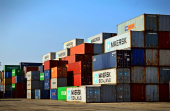Understanding key business terms is essential for anyone involved in the corporate world. These terms provide clarity and structure to business operations, communication, and strategic planning.
Customs Costs
Customs costs are expenses incurred during the import and export process of goods across international borders. These costs can significantly impact the total cost of importing or exporting goods. Understanding and managing these costs is crucial for businesses engaged in international trade.
Types of Customs Costs
1. Import Duties :
- Taxes imposed on imported goods based on their classification and value. Import duties vary by country and product type.
2. Value Added Tax (VAT):
- A tax on the value added to goods and services at each stage of production or distribution. In the context of imports, VAT is applied to the total value of the goods plus import duties.
3. Excise Taxes :
- Specific taxes on particular goods such as fuel. These are often levied in addition to import duties and VAT.
4. Customs Brokerage Fees:
- Fees paid to customs brokers who assist in clearing goods through customs by handling documentation and compliance with regulations.
5. Processing Fees :
- Administrative fees charged by customs authorities for processing the import or export of goods. These can include entry fees, inspection fees, and documentation fees.
6. Inspection Fees :
- Charges for the physical inspection of goods by customs authorities to ensure compliance with import regulations and standards.
7. Harbor and Port Fees:
- Charges for the use of port facilities, including loading and unloading of cargo, storage, and other port services.
8. Storage Fees :
- Costs incurred for storing goods in a customs warehouse while awaiting clearance. These fees can accumulate if there are delays in the customs process.
9. Anti-dumping Duties :
- Additional duties imposed to protect domestic industries from foreign companies selling goods at unfairly low prices.
10. Quarantine Fees :
- Costs associated with the quarantine inspection of goods, especially for agricultural and food products, to prevent the spread of pests and diseases.
Managing Customs Costs
1. Classify Goods Correctly :
- Accurate classification of goods under the Harmonized System (HS) codes can help determine the correct duties and taxes, avoiding potential penalties.
2. Leverage Trade Agreements:
- Utilize free trade agreements (FTAs) and preferential trade agreements to reduce or eliminate customs duties on eligible goods.
3. Plan for Additional Costs :
- Include customs costs in pricing strategies and financial planning to avoid unexpected expenses.
4. Use a Customs Broker :
- Engage experienced customs brokers to navigate complex regulations and ensure compliance, which can prevent delays and additional costs.
5. Stay Updated with Regulations :
- Regularly review changes in customs regulations and tariffs in the countries where you trade to stay compliant and avoid penalties.
6. Efficient Documentation :
- Ensure all required documentation is complete and accurate to facilitate smooth customs clearance and avoid delays and additional costs.

Importance of Understanding Customs Costs
- Cost Management :
- Proper understanding and management of customs costs can significantly impact the overall cost of goods like machinery , Apparel and the profitability of international trade.
- Compliance:
- Ensuring compliance with customs regulations helps avoid fines, penalties, and delays, contributing to smoother operations.
- Strategic Planning :
- Awareness of customs costs aids in strategic decision-making regarding sourcing, pricing, and market entry.
Reference Goods
Reference goods, also known as "reference products" or "benchmark products," serve as a standard for comparison in various industries, particularly in the context of customs valuation, quality control, and pricing strategies. These goods are used to establish a baseline or standard against which other similar goods are measured or compared.
Contexts of Reference Goods
1. Customs Valuation :
- Customs authorities use reference goods to determine the value of imported goods for the purpose of assessing duties and taxes. This is particularly relevant when there is no clear market value for the imported goods. Reference prices or values are often based on similar goods that have been previously imported and valued.
2. Quality Control :
- In manufacturing and production, reference goods are used as standards to ensure consistency and quality in products. These benchmark goods help maintain uniformity in production processes and final products.
3. Pricing Strategies:
- Businesses use reference goods to set competitive prices for their products. By comparing their goods to similar products in the market, companies can determine appropriate pricing strategies to attract customers while maintaining profitability.
4. Market Research:
- Reference goods are used in market research to analyze trends, consumer preferences, and competitive positioning. By comparing new products to established reference goods, businesses can better understand market dynamics and customer expectations.
Examples of Reference Goods Usage
1. Customs Valuation :
- A company importing electronic components might not have a clear invoice value. Customs authorities could use the value of similar electronic components previously imported to establish a reference value for duty calculation.
2. Quality Control :
- A car manufacturer might use a specific model of tire as a reference good to ensure that all tires used in production meet the same quality standards.
3. Pricing Strategies :
- A smartphone manufacturer might compare its new model to a leading competitor’s model to set a competitive price that reflects its features and market positioning.
4. Market Research :
- A beverage company introducing a new soft drink might compare it to existing popular brands to gauge potential market acceptance and position it appropriately.

Importance of Reference Goods
1. Consistency and Standardization :
- Reference goods help ensure consistency and standardization in valuation, quality, and pricing, which is crucial for maintaining fair trade practices and customer satisfaction.
2. Regulatory Compliance :
- Using reference goods for customs valuation helps businesses comply with international trade regulations and avoid legal issues related to undervaluation or misclassification of goods.
3. Competitive Analysis:
- By comparing products to reference goods, businesses can conduct effective competitive analysis, identify market gaps, and improve their offerings to meet or exceed market standards.
4. Customer Trust :
- Maintaining consistent quality by using reference goods in production can enhance customer trust and loyalty, as consumers expect reliable and uniform product quality.